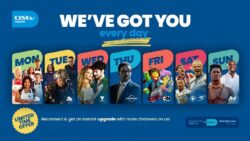By J. N. Halm
For years, it was widely accepted that insurance generally was not bought but sold. Since nobody normally wakes up thinking, “I’m dying to buy an insurance product today”, it was accepted that insurance products had to be pushed onto people. Since customers were not pulling, sales professionals had to do the pushing.
Stemming from this seeming reluctance of consumers to willingly buy insurance products of their own volition, the push approach became an orthodox approach that permeated every action of the insurance business. In the area of sales, the “push” paradigm meant that every insurer needed an “army” of sales professionals to get products into the hands of customers. Beyond sales, the concept of insurance being “sold and not bought” coloured every other aspect of life insurance, from underwriting to claims.
The fact that the most patronised insurance products happened to be those products that were “forced” on consumers by law gave credence to the “sold and not bought” paradigm. The belief was that if drivers were not going to be arrested and prosecuted for not insuring their vehicles, they would not have insured their vehicles.
Another argument people would normally make is that many landlords and homeowners in this country have no insurance for their houses because they know they are not going to be forced to do so by law.
The problem with the “sold and not bought” approach was that it made businesses focus more on what the business had to do than what customers wanted. If you believe the customer does not want to purchase what you are offering, there is really no motivation to find out what the customer wants. You become more interested in how you can break the customer’s resistance.
This is what led, in the past, to all manner of sales approaches in life insurance sales—some very unethical, with some even bordering on outright criminality. Closing techniques such as False Scarcity, False or Exaggerated Claims, and Undercutting of Competitors were just a few ways by which sales professionals were taught to force customers to sign on the dotted line.
Generally, the attitude of consumers toward purchasing life insurance is still not very positive. Having to purchase something that one might never use is not something that works for most people. The perceived lack of immediate benefit has always been high up the list of why people have an aversion to buying insurance products.
However, times seem to be changing. There’s a growing awareness of the importance of insurance in mitigating financial risks and protecting against unforeseen events, partly due to increased education and information sharing. As the general public becomes much more aware of the importance of life insurance, attitudes continue to change.
Also as lifestyles, especially for the growing middle class, have changed so have people’s needs for newer forms of insurance. People need protection against newer risks, risks that were none existent a few years ago.
In effect, one can no longer confidently say insurance is “sold, not bought”. But this does not also mean that life insurance is now “bought, not sold”. We have not gotten to that place yet.
The truth, therefore, is somewhere in the middle. In the current dispensation, life insurance, depending on the specific product, is sold, bought or bought and sold. There are those products that customers, on their own, convince themselves that they need. However, there are those products that customers need but are not aware of the existence of that product. For those products, there will still be a need to “sell” them to customers.
However, the greatest blow to the “sold and not bought” paradigm has to be technology. Technology, especially the advent of smart devices placing the world in the palm of the customer’s hand, has disrupted both the selling and buying of insurance. Customers can, and do, search for any product they want to buy on the Internet, before making the final decision. There is proof that a lot of pre-purchase information gathering happens online.
The advent of businesses such as MYFIG.COM, where customers can go and have access to more information about more products they can ever wish for. With Insurtech automated platforms like MYFIG.COM, customers buy policies and manage their insurance portfolio in one seamless, integrated experience.
New technologies that aid in the selling and buying of life insurance however in no way relegates the job of the life insurance sales professional. Good sales professionals are still very much an integral part of the insurance landscape.
The truth is that even with all the technology available, customers are still talking to individuals whose opinions they value. Family, friends, and acquaintances who seem to know something about insurance are still being consulted before any purchase is made.
The future looks exciting but also challenging for Insurance. This would however call for a new approach to insurance, involving:
- Continuing Public Education
- There must be a collective effort on the part of all stakeholders in the industry to attempt a change in people’s attitudes to insurance. This will lead to what industry icon, C. C. Bruce Jnr refers to as “increasing the size of the industry pie”.
- A Paradigm Shift in Insurance Selling
- Believing they are now savvy enough to make their own purchasing decisions, today’s insurance customers resent being sold to. They do not want to be seen as docile beings who have no willpower. They want to believe they bought the product on their own accord. This is therefore how they should be sold. Today’s insurance sales pro must present all available information to customers and manage these customers to make the purchase decision on their own.
- Insurance sales professionals should move from being vendors to becoming consultants
- It is now even more important for insurance companies to listen to customers. This is how the modern sales pro must think, and thus approach the job. Due to the intense emotions that can accompany insurance sales and purchases, insurance sales pros must be trained in emotional intelligence. Customers are already consulting. They are consulting their family, friends, and acquaintances. So why not make sales professionals the first ones customers consult?
- Increased Adoption of Technology, especially Artificial Intelligence
- Insurers must start creating exciting digital experiences for their customers. From prospecting, all through to closing the deal, today’s insurance sales must be tech-heavy. Using chatbots to speed up routine inquiries should become a part of the customer’s experience.
If customers are going to start buying insurance, rather than being sold to, then they must be aided to do so. Starting with the websites of insurance companies, these should be re-configured to be optimised for mobile devices and feature tools to guide prospects to the most applicable product. Insurers should employ social media and third-party data to identify and engage with customers on their terms. They will use data analytics, enhanced with AI, to identify customers by their characteristics and online activity and tailor marketing to them.
- Top Managers must be an important part of the new paradigm.
- As important as it is for sales pros to be more sales consultants than vendors, it is equally important that the top brass of insurance businesses also take the lead in engaging with customers. Leadership must not only show the way, they must also go the way.
In conclusion, it is important to realise that within every challenge is an opportunity. The days of insurance being sold and not bought are slowly receding behind us. All sales and marketing models that have relied on this approach in the past must now take a second look at their models. But this is where the difference between the businesses that excel and those that just came to compete is going to show. The businesses that will lead the market are those that are going to be able to create models built on the new paradigm that life insurance is now bought and sold.










